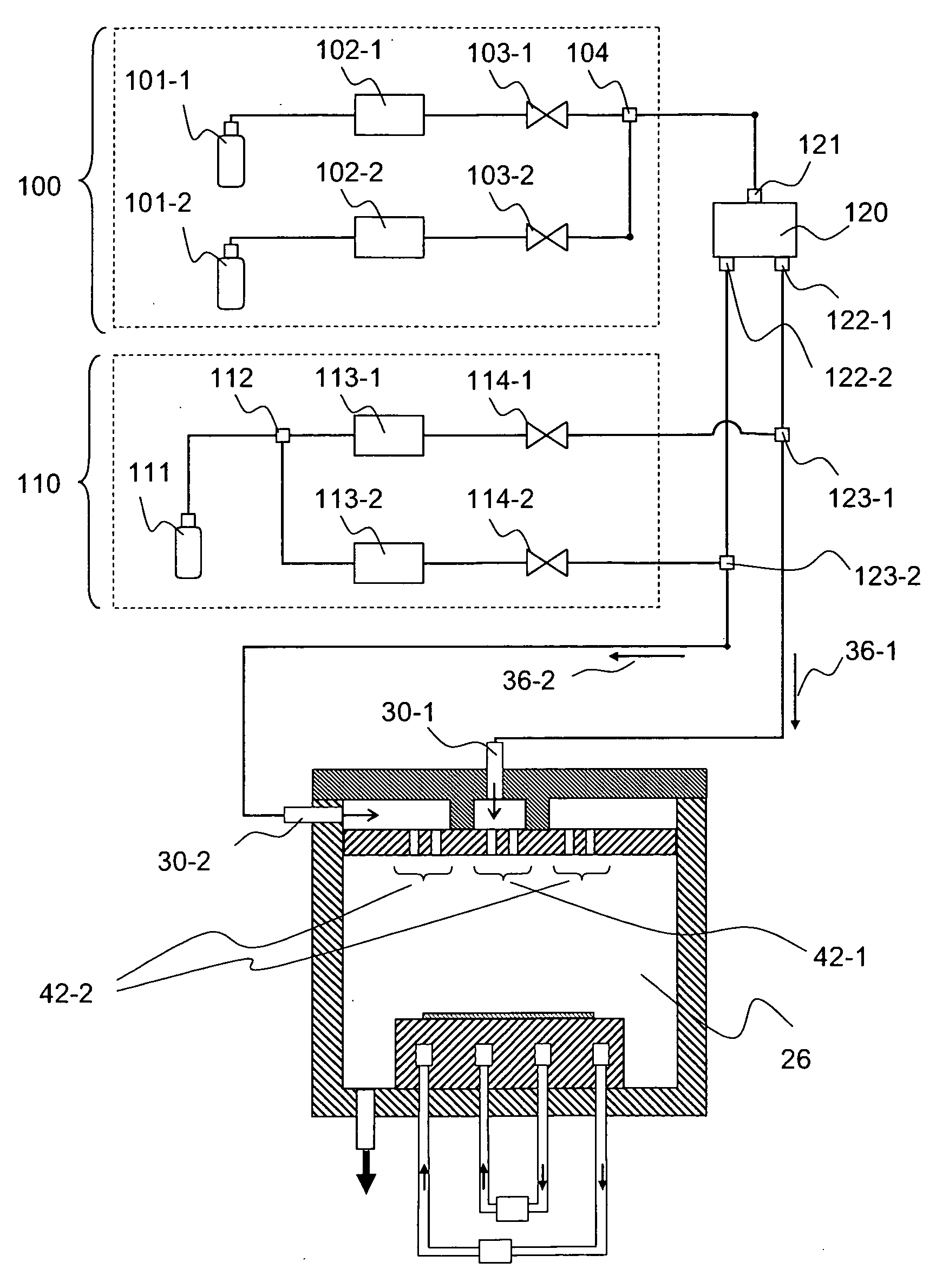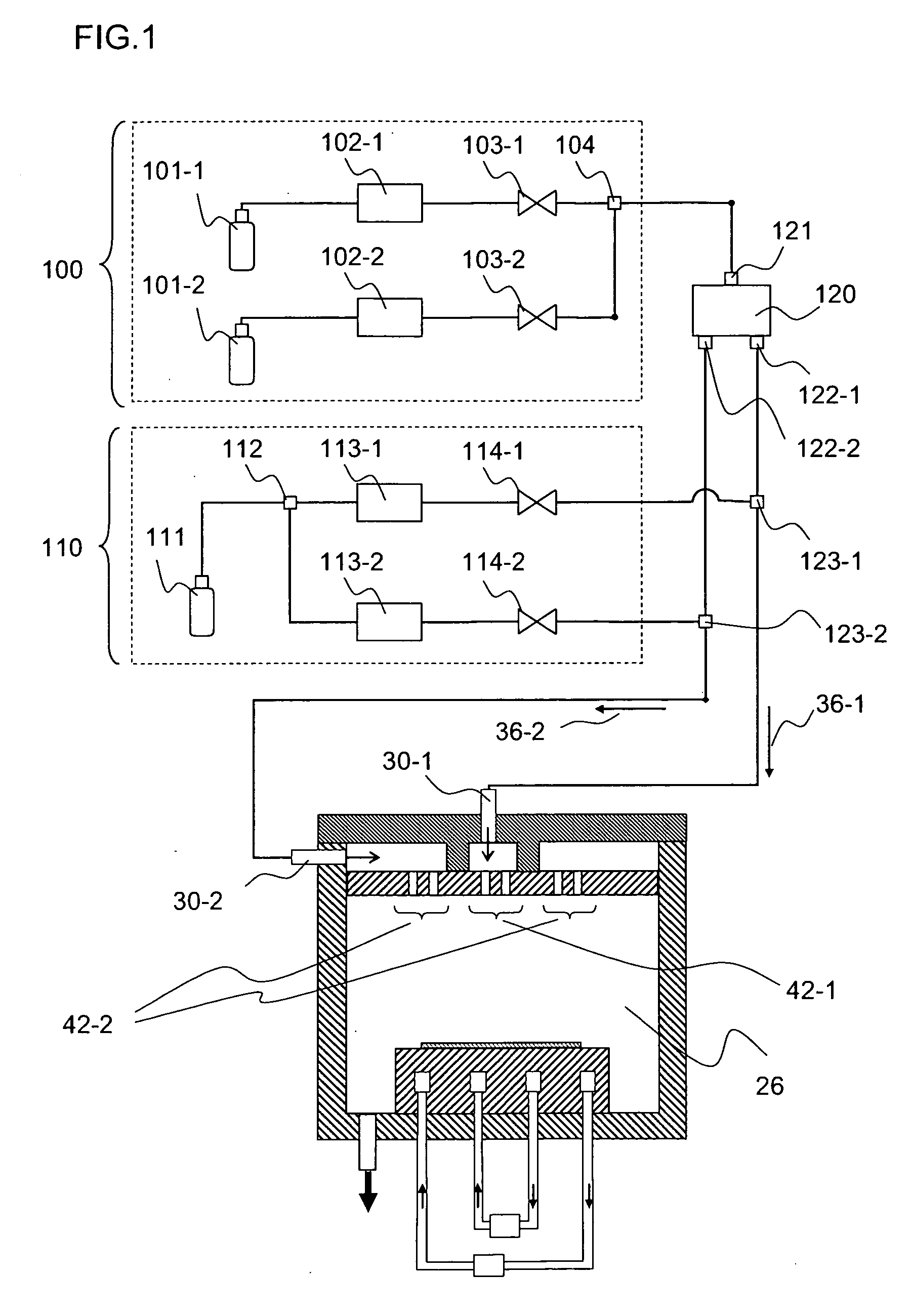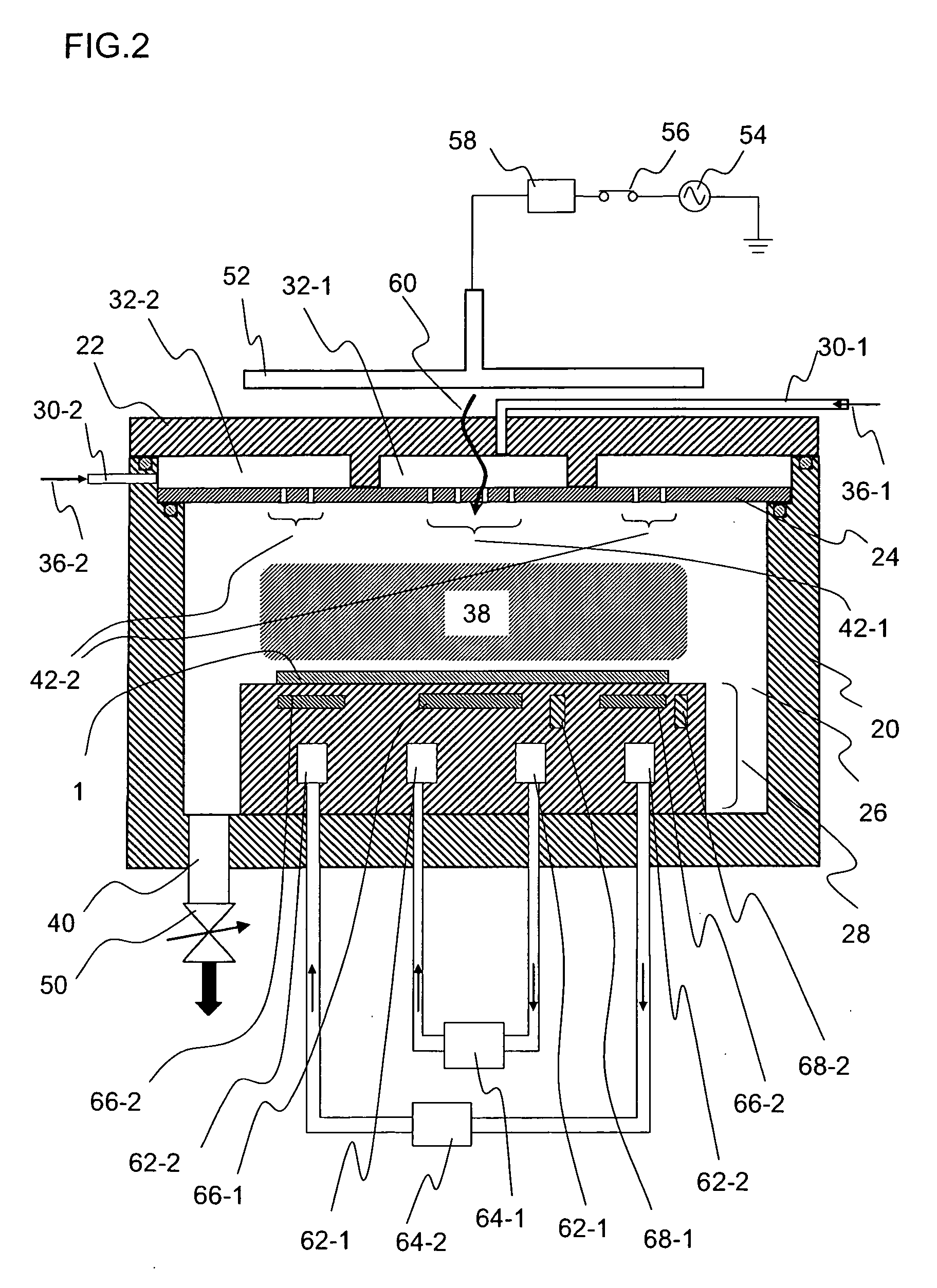Plasma etching apparatus and plasma etching method
a technology of plasma etching and etching apparatus, which is applied in the direction of fluid pressure measurement, instruments, vacuum gauges, etc., can solve the problems of in-plane uniformity of etch rate over a wider area of specimen, increase in specimen size, and in-plane so as to reduce the non-uniformity of cd shift and excellent in-plane uniformity
- Summary
- Abstract
- Description
- Claims
- Application Information
AI Technical Summary
Benefits of technology
Problems solved by technology
Method used
Image
Examples
embodiment 1
[0041]FIG. 1 is a schematic view of a UHF-ECR plasma etching apparatus and a gas system of the etching apparatus according to Embodiment 1 of the present invention. The gas system includes a common gas system 100 and an additive gas system 110. The common gas system 100 includes gas supply units 101-1 and 101-2, which serve as gas supply sources, flow controllers 102-1 and 102-2 for controlling the flow rates of respective gases, valves 103-1 and 103-2 for controlling respective gas flows, and a confluence 104 where the gases in the common gas system 100 join into one. In the present embodiment, the gas supply unit 101-1 contains hydrogen bromide (HBr) and the gas supply unit 101-2 contains chlorine (Cl2) as common gases.
[0042] The mixed common gas in the confluence 104 enters a downstream gas flow divider 120. The gas flow divider 120 divides a gas flowing through an inlet 121 into a plurality of (two in the present embodiment) gases flowing through outlets 122-1 and 122-2 at any ...
embodiment 2
[0075] An etching step 1 is the etching step of the antireflection coating 5, that is, a BARC etching step. The temperatures of the inner portion and the outer portion of the specimen 1 are adjusted to desired temperatures to achieve the target CD shift in the BARC etching step. For example, in the present embodiment, the desired temperatures are 16° C. at the center portion and 10° C. at the outer portion. The specimen 1 is heated by plasma 38 during etching. As described above, heat is transferred from the specimen 1 to the specimen holder 28 via a helium gas flowing between the specimen 1 and the specimen holder 28 to control the temperature of the specimen 1. In this case, the temperature of a refrigerant circulating in the specimen holder 28 must be lower than the temperature of the specimen 1. In the BARC etching step, to achieve the desired temperatures at the center portion and the outer portion of the specimen 1, the temperatures of the inner circulator 64-1 and the outer c...
embodiment 3
[0080] Embodiment 3 of the present invention is described below with reference to FIG. 6. In the present embodiment, the structures and the control techniques described in Embodiments 1 and 2 are applied to a gate etching process including a plurality of steps of a BARC etching step and a polysilicon etching step but not including a nonoperating step.
[0081]FIG. 6A illustrates the temperatures at the center portion and the outer portion of the specimen 1. The temperature 80 at the center portion is indicated by a solid line. The temperature 82 at the outer portion is indicated by a broken line. FIG. 6B illustrates the flow rates of oxygen in the first processing gas 36-1 and the second processing gas 36-2. The oxygen flow rate 84 in the first processing gas 36-1 is indicated by a solid line. The oxygen flow rate 86 in the second processing gas 36-2 is indicated by a broken line. FIG. 6C illustrates the flow rates of chlorine flowing through the central gas inlet region 42-1 and the ...
PUM
| Property | Measurement | Unit |
|---|---|---|
| internal pressure | aaaaa | aaaaa |
| internal pressure | aaaaa | aaaaa |
| temperature | aaaaa | aaaaa |
Abstract
Description
Claims
Application Information
 Login to View More
Login to View More - Generate Ideas
- Intellectual Property
- Life Sciences
- Materials
- Tech Scout
- Unparalleled Data Quality
- Higher Quality Content
- 60% Fewer Hallucinations
Browse by: Latest US Patents, China's latest patents, Technical Efficacy Thesaurus, Application Domain, Technology Topic, Popular Technical Reports.
© 2025 PatSnap. All rights reserved.Legal|Privacy policy|Modern Slavery Act Transparency Statement|Sitemap|About US| Contact US: help@patsnap.com



